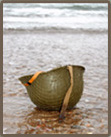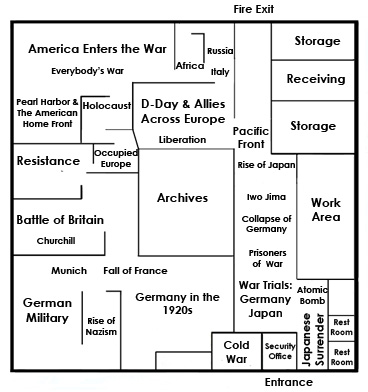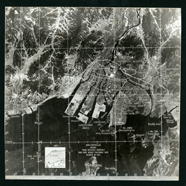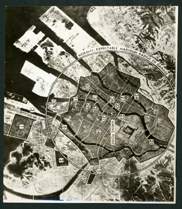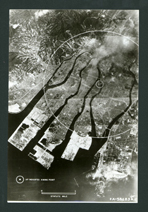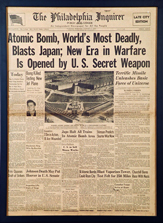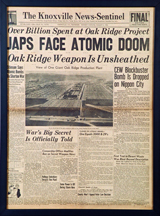The exhibit includes Jacob Beser's Operations Orders for the Hiroshima and Nagasaki missions; navigator "Dutch" van Kirk's navigation and personal artifacts from the Enola Gay mission; reconnaissance photographs of Hiroshima taken several days before the atomic bomb was dropped; a leaflet showing the Hiroshima blast that was dropped on the Japanese as a warning to surrender, and teletype news reports of the bomb. An eyewitness account by the tail gunner of the Enola Gay, Bob Caron, is exhibited. Also, the sign welcoming the Enola Gay back to Tinian, made by the Seabees and signed by all of the crew. One of the very few letters Harry Truman wrote explaining why he decided to drop the bomb is also displayed. |
|
| |
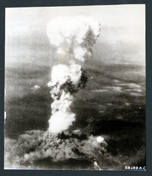 |
The Hiroshima Blast |
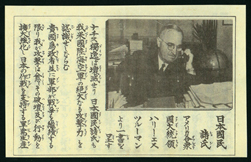 |
Truman's aerial leaflet reassuring the Japanese people that they will not be harmed if their country surrenders. |
|
| |
|
| |
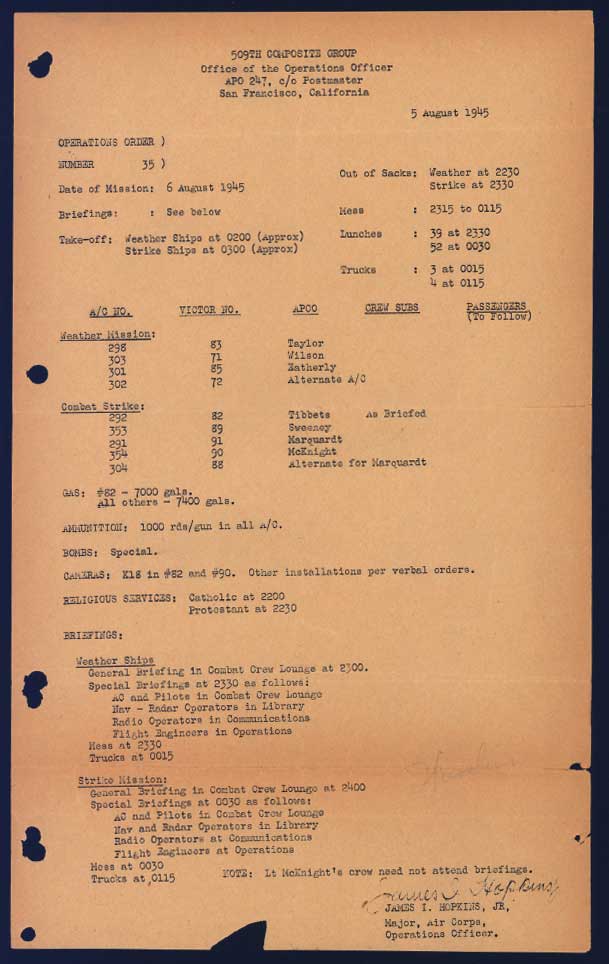 |
THE OPERATIONS ORDER THAT LAUNCHED THE ATOMIC AGE: 6 August 1945. The detailed order for the atomic bomb attack on Hiroshima: “Bombs: Special”. Tibbetts commanded the Enola Gay carrying the first atomic bomb; Sweeney, the instrument plane, and Marquardt, the photo plane. The fourth combat plane went ahead to Iwo Jima, in case of mechanical failure on the Enola Gay. The Enola Gay, #82, carried 400 less gallons of fuel due to the 9,000 pound weight of the atomic bomb.
This operations order was carried on the Enola Gay in the flight log of Jacob Beser, the radar and electronics specialist trained to intercept any Japanese radar impulses that could trigger the special radar-operated fusing switch built into the atomic bomb. Beser has penciled “Hiroshima” in the lower right. |
|
| |
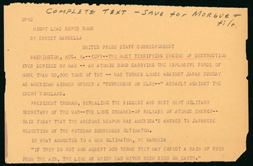 |
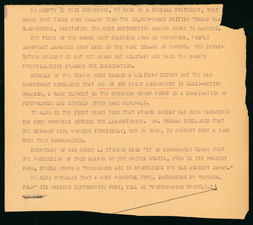 |
Teletype of the first news flash of the atomic bomb. |
|
| |
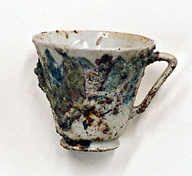 |
Japanese tea cup from Hiroshima that survived the atomic blast. |
|
| |
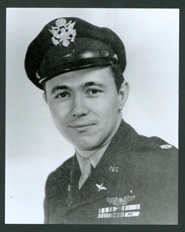 |
Theodore J. "Dutch" Van Kirk was the navigator of the Enola Gay on the atomic bomb mission to Hiroshima. He flew on 58 combat missions with the 97th Bomb Group over occupied France and Germany. Later, he was selected to fly Gen. Mark Clark on a secret mission to negotiate with the Free French in Algeria, and was also navigator aboard the aircraft that flew Gen. Dwight Eisenhower to the invasion site in North Africa to launch Operation Torch. |
|
| |
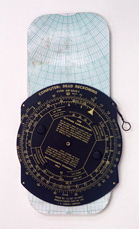 |
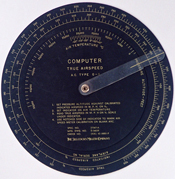 |
USAAF E-6 flight computer (left) and G-1 True Airspeed flight computer, used by Van Kirk on the Enola Gay. |
|
| |
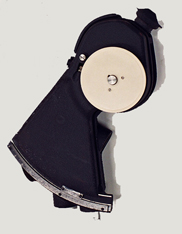 |
Van Kirk's navigator's sextant, used to plot the course to Hiroshima. |
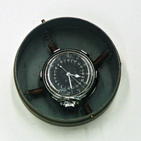 |
Master Navigator's Clock, used by Van Kirk on the Hiroshima mission. |
|
| |
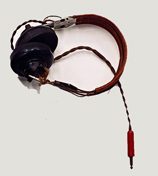 |
Van Kirk's radio headset. |
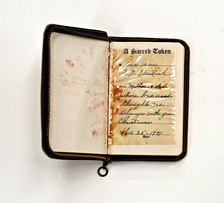 |
New Testament, given to Van Kirk by his parents, Christmas 1941, and taken with him on the Hiroshima flight. |
|
| |
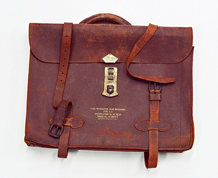 |
Navigator's case carried by Van Kirk. |
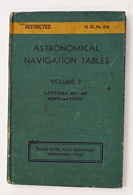 |
Van Kirk's personal copy of the Astronomical Navigation Tables: Volume P, for latitudes 65-69 degrees north and south. |
|
| |
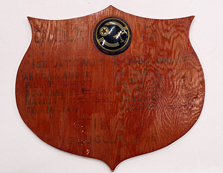 |
Wooden plaque made by U.S. Navy Seabees welcoming Enola Gay and her crew back to Tinian Island after the atomic bombing of Hiroshima, Aug. 6, 1945. Signed by the crew. (The Boeing emblem is from the control column of a B-29 Superfortress.) |
|
| |
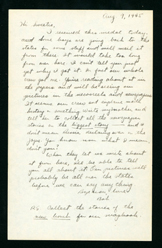 |
Bob Caron, tail gunner of the Enola Gay, letter to his wife, August 9, 1945: "I received this medal today, and some boys are going back to the states for some stuff and will mail it from there. It would take too long from over here. I can't tell you just yet why I got it. In fact our whole crew got one. You're reading about it in the papers and will be seeing our pictures in the newsreel and newspapers. It seems our crew and airplanes made history or something. Write my mother and tell her to collect all the newspaper stories on the biggest story--and I don't mean Russia declaring war on the Japs. You now know what I mean, don't you? When they let us write about it from here, I'll be able to tell you all about it. Our picture will probably be all over the states before we can say anything. P.S. Collect all the stories of the new bomb for our scrapbook." |
|
| |
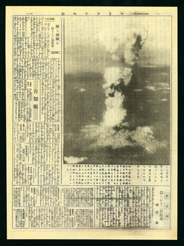 |
Aerial leaflet dropped on Japanese cities showing the Hiroshima atomic blast and warning that they will continue if Japan does not surrender. |
|
| |
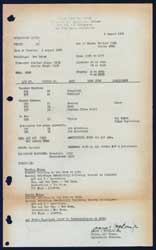 |
THE SECOND ATOMIC BOMB: Operations Order, 8 August 1945. Charles Sweeney, pilot of the instrument plane at Hiroshima, commanded the Bock's Car, carrying the atomic bomb dropped at Nagasaki. Jacob Beser, the radar and electronics specialist on the Hiroshima raid, was the only person who flew on-board on both missions. This order was carried by him on the second mission, as he repeated his role, and he penciled in "Nagasaki" in the lower left. |
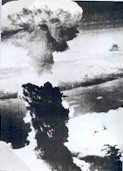 |
The Nagasaki atomic blast. |
|
| |
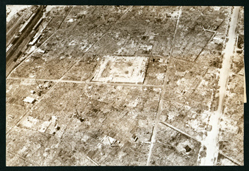 |
Reconnaissance photographs of Nagasaki before (left) and after the atomic bomb. |
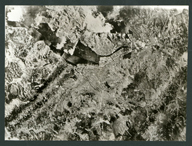 |
|
| |
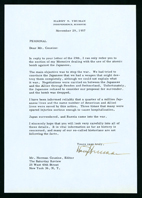 |
Truman discusses the dropping of the Atomic bombs in a letter to Norman Cousins. Cousins conceived the idea of creating the United World Federalists--a group urging world government and "moral adoption" of Hiroshima orphans by Americans who would send financial support to Japan. In 1949, Truman refused to meet with Cousins' delegation. Undeterred, Cousins arranged fundraising tours in the United States of Hiroshima survivors in support of his ideas and creation of a Hiroshima Peace Center. |
|
| |
|
| |
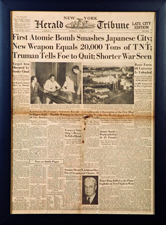 |
November 26, 1945, U.S. Armed Forces "Newsmap", recapping the chronology of atomic development. |
|

